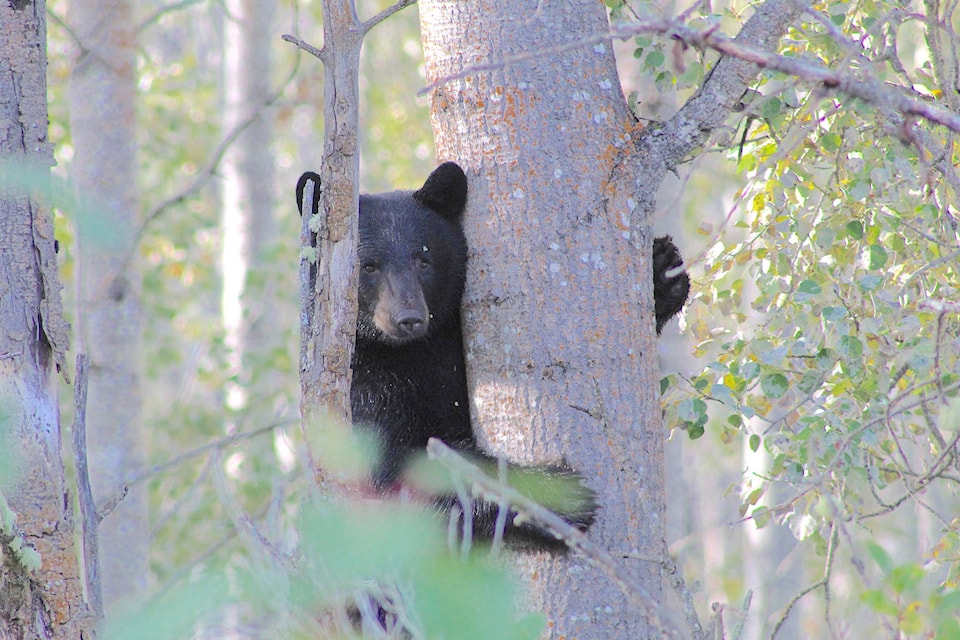The conservation office in the Skeena region had a busy and frustrating bear season this fall.
Conservation Officer Kevin Nixon said calls were up substantially and the amount of bears they handled tripled.
“We took about half a dozen bears out of Telkwa, there was a bear around Alfred and Broadway [in Smithers] two weeks ago and we never dealt with that but we took some bears out behind Dairy Queen, we took bears out by the hospital, we took bears out by the Hilltop, we took one out from behind Muheim,” he said.
Nixon thinks the high number of bear sightings is because of a very healthy bear population.
“I think this is from three years in a row of having a phenomenal berry crop,” he said. “The sows, when they go into the den, based on their health dictate how many cubs they are going to bring to term. They get bred in the spring but they have what is called a delayed implantation. The embryos essentially sit in limbo until they go into their den in the fall.
“If they are nice and fat and healthy then they will bring three potential cubs to term or if they are scrawny and malnutrition they will abort most of them and maybe only bring one to term. It is a system that is designed to look after the sows health first. They are very unique critters. We saw lots of triplets this year, I think that is a good indication that we had very healthy sows going into the den last winter.”
The problem became when people left attractants out this year.
“Every community I’m dealing with … we are so frustrated,” Nixon said. “Trying to get people to clean up their garbage. It is every community, including our First Nations communities. We’ve got smoke house issues, garbage, chicken food, dog food, rabbit pellets, bird feeders and apples of course is a big one. It is very, very frustrating.”
In a press release, the Conservation Officer Service (COS) reminded area residents it is an offence under the Wildlife Act to feed wild animals and to have attractants accessible to dangerous wildlife. This year the COS cracked down on properties with attractants which resulted in an increase of people getting fines for not cleaning up.
“We took a fairly firm stance this fall,” said Nixon. “We issued a bunch of dangerous wildlife protection orders which is a legal document ordering people to clean up their attractant and failure to do so resulted in a few tickets.”
Bears usually go into hibernation around now, but Nixon advises people to wait until later in November to put out their bird feeders again. The COS is continuing to conduct audits.
